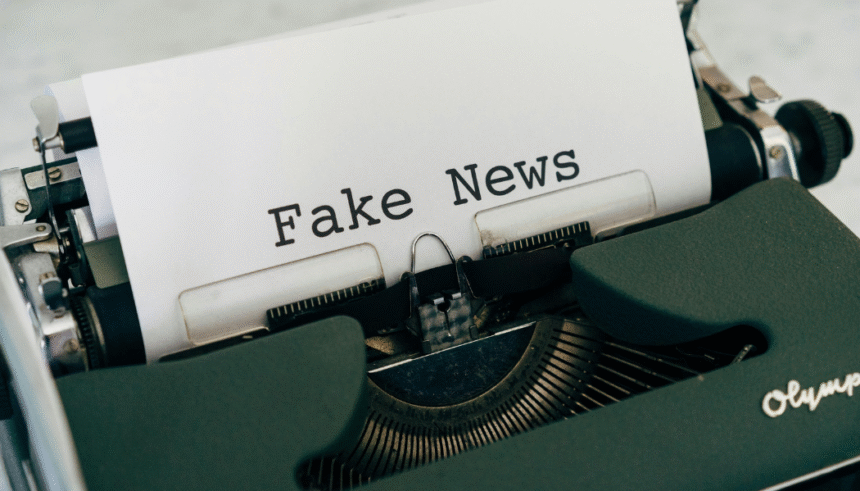In today’s fast-moving digital world, information spreads at lightning speed. Every minute, millions of posts, tweets, and videos reach people across the globe. But alongside true information, false stories—known as fake news—have become a major problem. They look convincing, sound credible, and can easily confuse readers. Understanding fake news and its influence has become essential for anyone who uses the internet.
Meaning of Fake News
Fake news refers to false or misleading information presented as real news. It is often created to deceive people, provoke emotions, or push a particular agenda. Some fake stories are completely invented, while others twist real facts to make them seem different from the truth. These stories appear on social media, websites, and sometimes even in traditional media outlets.
Fake news can take many forms—articles, memes, videos, or manipulated photos. The goal is the same: to influence what people believe.
A Brief History of Fake News
Fake news is not a modern invention. Centuries ago, political leaders and newspapers sometimes spread rumors to gain power or profit. However, the internet revolutionized how misinformation travels. Platforms such as Facebook, X (Twitter), and TikTok allow anyone to post anything instantly, reaching millions in seconds.
The term fake news became globally recognized during the 2016 U.S. presidential election, when false stories circulated widely online. Since then, fake news has been linked to many issues—from political campaigns to public health crises.
Why People Believe Fake News
It is easy to assume that only careless people fall for fake news, but research shows otherwise. Human psychology plays a major role. People tend to believe information that supports their existing opinions, a behavior known as confirmation bias. Fake news also often appeals to emotion—anger, fear, or excitement—which makes it more shareable.
Social media algorithms make things worse by showing users more of what they already like or agree with. This creates echo chambers, where people see the same opinions repeated, making false information feel true.
Types of Fake News
Not all fake news is created the same. Here are a few common forms:
- Satire or parody: Humorous stories made for entertainment that some readers mistake for truth.
- Misleading content: Real information presented out of context or exaggerated.
- Fabricated stories: Entirely made-up stories designed to deceive.
- Propaganda: Biased information used to influence public opinion.
- Clickbait: Sensational headlines written only to attract attention.
- Manipulated media: Edited images, videos, or deepfakes that distort reality.
Each type has its own method of misleading audiences, but all can damage trust in real information.
How Fake News Spreads
Fake news spreads mainly because it is easy to share and emotionally charged. A shocking headline can travel faster than a verified article because it triggers curiosity or anger. Social media users often share posts without reading them fully, helping false information go viral.
Automated accounts, known as bots, also play a big part. They share fake stories thousands of times, making them appear popular and believable. Meanwhile, algorithms on major platforms prioritize engagement—likes, comments, and shares—over truthfulness, which unintentionally amplifies misinformation.
The Consequences of Fake News
The effects of fake news reach far beyond the screen.
Political Impact: False stories can sway elections, damage reputations, and divide communities. When people cannot agree on basic facts, democracy suffers.
Social Impact: Fake news often spreads hate, fear, or confusion. It can increase tension between groups or communities.
Economic Impact: Businesses have been harmed by fake reports that spread rumors about their products or finances. A single false post can wipe out millions in stock value.
Health Impact: During the COVID-19 pandemic, fake cures and conspiracy theories caused real-world harm. People followed dangerous advice because they trusted misinformation.
These consequences show why identifying fake news is a shared responsibility.
How to Identify Fake News
Spotting fake news is easier when you know what to look for. Here are practical steps to protect yourself:
- Check the source: Is it a reputable outlet or an unknown website?
- Read beyond the headline: Headlines can mislead; always read the full story.
- Look for evidence: Reliable news cites data, experts, or official statements.
- Check the date: Old stories sometimes reappear as if they are new.
- Compare with trusted outlets: If no credible media reports the same story, be cautious.
- Watch for emotional tone: If the language feels exaggerated or angry, double-check it.
- Use fact-checking websites: Platforms like Snopes, PolitiFact, and Reuters Fact Check verify viral claims daily.
These small habits help you avoid being misled and prevent the spread of false information.
Why Fake News Matters
Fake news matters because it erodes trust—in the media, in institutions, and even in one another. When people cannot tell truth from fiction, they stop believing everything. This weakens democracy, public health, and social harmony.
Moreover, fake news affects the youth, who spend more time online and often learn about the world through social media. If misinformation shapes their understanding, it influences the future of entire societies.
Recognizing fake news is not just about protecting oneself; it’s about defending truth and accountability in a digital age filled with noise.
Global Efforts to Fight Fake News
Governments, journalists, and technology companies are taking steps to address this issue. Many countries now invest in media literacy programs to teach students how to evaluate online content. Tech giants like Meta, Google, and X have introduced features that label or reduce visibility of misleading posts.
Independent organizations such as The International Fact-Checking Network (IFCN) work worldwide to promote transparency and credibility in journalism. Some countries have even passed laws against deliberately spreading false news, although such laws must balance truth with freedom of speech.
The Future of Fake News
As technology advances, fake news will evolve. Artificial intelligence can now create realistic deepfakes—videos that make people appear to say or do things they never did. These pose serious threats to privacy, politics, and journalism.
However, technology also offers solutions. AI-driven tools are being developed to detect misinformation faster than humans can. In the future, digital literacy and responsible media consumption will be as important as reading and writing.
Combating fake news requires teamwork—governments creating fair policies, companies maintaining ethical standards, and individuals staying alert.
Conclusion
Fake news is not just an internet problem—it’s a social challenge that shapes how people think and act. It thrives on emotion, speed, and carelessness. Yet, by being more thoughtful and informed, everyone can play a role in reducing its impact.
Buzzlift: Alert Feature Technology by Japan
Understanding what fake news is and why it matters helps build a healthier information environment where truth stands stronger than lies. In today’s digital world, knowing the difference between fact and fiction is not just important—it is essential for the future of honest communication.






